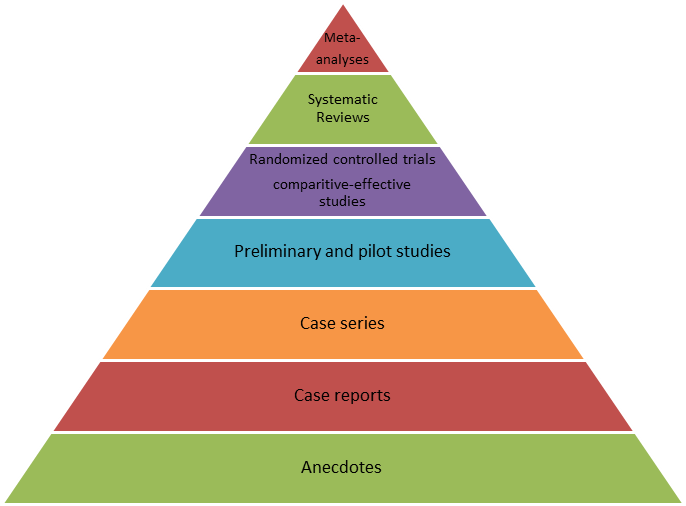Intro to the Research Pyramid
Posted:Monday, July 22, 2019
 By Ruth Werner, BCTMB
By Ruth Werner, BCTMB
Excerpted from the free MTF eBook, Instructors’ Guide to Teaching Research
Not all research carries equal weight. Anecdotes and case reports may tell a great story, but they are not rigorously tested on a broad population, and we can’t assume that all clients will have a similar experience to the one being described.
For instance, a single massage therapist might have great results with a client who has back pain, and that’s important to share. But when we conduct clinical trials with dozens of clients who have back pain, we’ll have a clearer idea of what a realistic outcome for massage therapy might be. When a team compares multiple clinical trials about massage therapy for back pain in a systematic review or meta-analysis then the power of that information is even greater.
The Research Pyramid (below) is a representation of how evidence moves up in both credibility and generalizability. Many different versions of the research pyramid are available, but they all move from individual opinions, stories, and reports at the base, to systematic reviews and meta-analyses at the peak. When we read a research article, it is important to be able to place it in the research pyramid to see how it relates to other studies on the same topic.

For more information on the research hierarchy visit: https://guides.library.uab.edu/ebd/evidencestrength
Activities for becoming more familiar with the research hierarchy include:
- Read an abstract, identify what type of research design it is and where it occurs in the research hierarchy.
- Propose a research study, then identify what kind of design(s) it uses.
- Create flash cards using the terms on the Types of Research Design table.
- Access the abstracts of at least three different research designs relevant to massage therapy from PubMed.gov and identify what type of studies they are.
